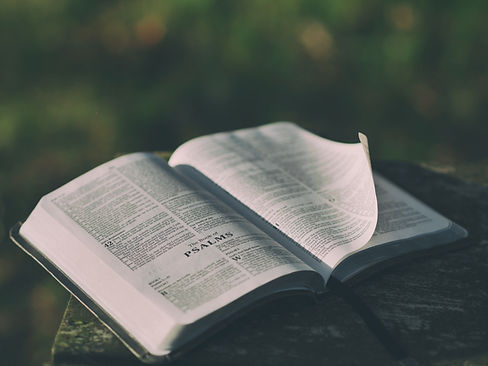
Forms of Prayer

Liturgy of the Hours/ Divine Office
Praying the Liturgy of the Hours, otherwise known as the Divine Office, extends to apostolic times. Initially, the Hours consisted almost entirely of psalms and readings from the Scriptures. Still, in more recent times, prayers have been grouped into an array of psalms, hymns, prayers, biblical and spiritual lessons, plus sermons and writings, according to the church’s liturgical seasons.
There are seven Hours of Prayer for each day of the church’s liturgical year. The most common Hours prayed are Morning Prayer, Mid-morning Prayer, Midday Prayer, Midafternoon Prayer, and Evening Prayer. The Office of Readings (no set time) is the longest prayer and can be prayed at any time of the day. Clergy are encouraged to pray the Hours daily. (Traditionally, it was believed that praying the Hours was reserved for the clergy.)
Incorporating the Hours into our daily prayer lives is for everyone. Visit www.iBreviary.org to find The Liturgy of the Hours.
Want to take your prayer life in a new direction? Try beginning with either Morning Prayer or Evening Prayer. The Office of Readings provides multiple scripture readings and psalms for those who can spend a little more time.
Lectio Divina
(Divine Reading)
Lectio Divina dates back to the early centuries of the Christian Church as a contemplative way to “pray-read” the Bible. Lectio Divina is not Bible Study; instead, Lectio is more about forming our spiritual relationship with our Creator. The scriptures lead us deeper into a divine encounter with the living God through prayer. It requires that we slow down and read a short passage more than once.
The practice of Lectio draws us into “chewing” on scripture slowly and carefully reading, reflecting, responding, and resting so that we savor the word of God. As we grow through the practice of Lectio Divina, the Scriptures begin to speak to us in new ways. It aids us in our union with Christ Jesus, the Living Word. Click here for the four steps of Lectio Divina.


Centering Prayer
Centering Prayer is a form of contemplative, meditative prayer. For centuries, various versions of centering prayer have been around, particularly in Eastern traditions.
A contemporary Christian form of centering prayer was brought to the forefront by Father Thomas Keating (1923-2018), a Catholic priest and Cistercian monk. He dedicated his life to finding God and furthering his relationship with Him.
Centering Prayer teaches us to get out of our heads and, instead, place our entire being into the silence and the presence of the Divine, all to deepen our relationship with God. Unlike forms of meditative yoga that may require challenging physical positions, we begin coming to our “center” in a seated position by training our minds and bodies to let go of every thought and distraction.
Centering Prayer is helpful with Lectio Divina. For a tutorial video on Centering Prayer, watch: What Is Centering Prayer and How Do We Do It?


